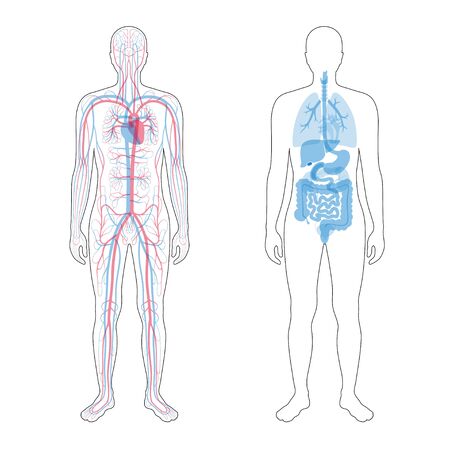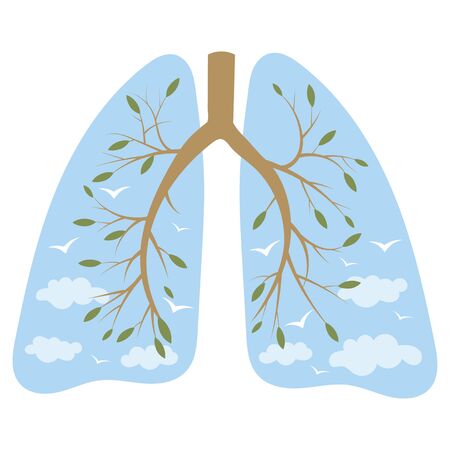Understanding Osteoporosis in Older Adults
Osteoporosis is a prevalent condition among older adults in the UK, characterised by reduced bone density and increased fragility. This silent disease often develops gradually, making it difficult for individuals to recognise until a fracture occurs. In the United Kingdom, it is estimated that over three million people are living with osteoporosis, with older adults—especially women post-menopause—being most at risk. The consequences of osteoporosis are significant, as weakened bones lead to an increased likelihood of fractures, most commonly in the hip, spine, and wrist. Such injuries can have a profound impact on independence and overall quality of life.
Older adults living with osteoporosis face numerous challenges beyond the physical effects of the disease. Common difficulties include chronic pain, limited mobility, and a higher risk of falls, which can further compromise health and well-being. Emotional concerns such as anxiety about falling or losing independence are also prevalent in this population. Additionally, many individuals encounter barriers to accessing appropriate healthcare services and rehabilitation programmes tailored to their specific needs.
In the context of the UK’s ageing population, addressing osteoporosis through comprehensive rehabilitation is essential for supporting older adults to maintain their autonomy and live well. Understanding the unique challenges faced by this group is the first step towards developing effective interventions that promote bone health and reduce the risk of future complications.
2. The Importance of Rehabilitation and Staying Active
Rehabilitation and physical activity play a pivotal role in managing osteoporosis, especially for older adults living in the UK. As bones naturally become more fragile with age, tailored rehabilitation programmes are essential to promote bone health, improve mobility, and reduce the risk of falls and fractures. Here’s why personalised rehabilitation is crucial and how staying active can help maintain independence and quality of life.
Why Tailored Rehabilitation Matters
Every individual’s experience with osteoporosis is unique, influenced by factors such as age, overall health, previous injuries, and level of physical activity. A one-size-fits-all approach is often insufficient. Instead, rehabilitation should be customised to address specific needs and limitations. This ensures safe progression, minimises the risk of injury, and maximises positive outcomes for bone strength and functional ability.
Key Benefits of Personalised Rehabilitation
| Benefit | Description |
|---|---|
| Improved Bone Density | Targeted exercises stimulate bone growth and slow down loss of bone mass. |
| Enhanced Balance & Coordination | Specialist-led activities reduce the risk of falls—a major concern for those with osteoporosis. |
| Pain Management | Therapeutic movement helps alleviate discomfort associated with weak or brittle bones. |
| Boosted Confidence & Independence | Safe participation in daily activities enhances self-esteem and supports living independently. |
| Better Overall Health | Physical activity improves cardiovascular fitness, mental wellbeing, and muscle strength. |
The Role of Physical Activity in Everyday Life
Staying active doesn’t always mean going to a gym; it can include gentle activities like walking in your local park, gardening, or participating in community exercise classes designed for older adults. The NHS recommends at least 150 minutes of moderate-intensity exercise per week for older adults, tailored to individual capabilities. Incorporating regular movement into your routine not only strengthens bones but also supports heart health, mental wellbeing, and social connection—key elements for ageing well in the UK.
Top Tips for Staying Active Safely:
- Choose activities you enjoy and can maintain long-term.
- Work with healthcare professionals or physiotherapists familiar with osteoporosis care.
- Make adaptations at home (e.g., removing trip hazards) to create a safer environment for exercise.
- Listen to your body—pace yourself and rest as needed.
- If new to exercise or returning after an injury, start slowly under professional guidance.
A tailored rehabilitation plan combined with consistent physical activity forms the foundation for strong bones and an empowered lifestyle for older adults living with osteoporosis across the UK.

3. Working with Your NHS Healthcare Team
Navigating osteoporosis rehabilitation in the UK often means collaborating closely with your NHS healthcare team. This team typically includes your GP, physiotherapists, nurses, occupational therapists, and sometimes specialist consultants. Effective communication and partnership with these professionals are crucial for developing a personalised care plan tailored to your unique needs.
Building Relationships with Your GP
Your GP is usually your first point of contact and plays a central role in coordinating your osteoporosis care. Make sure to attend regular check-ups and discuss any changes in symptoms or concerns you may have. Don’t hesitate to ask questions about medication options, possible side effects, or available community resources. GPs can also refer you to specialist services within the NHS as needed.
Working with Physiotherapists
Physiotherapists are essential in helping you regain strength, balance, and mobility. They will assess your physical abilities and design an exercise programme that’s safe and effective for osteoporosis management. Ask your physiotherapist about fall prevention strategies and exercises that you can continue at home. Regular feedback helps them adjust your plan as your condition changes.
Collaborating with Other NHS Professionals
Depending on your situation, you may work with occupational therapists who can suggest practical adjustments for daily living—such as fitting grab rails or recommending adaptive equipment. Dietitians may offer guidance on nutrition to support bone health, while fracture liaison nurses provide ongoing support after a fracture. Each professional contributes valuable expertise to your overall rehabilitation journey.
Creating Your Personalised Care Plan
Your NHS team will work together to create a care plan that considers your medical history, lifestyle, and personal goals. It’s important to be open about what matters most to you—whether it’s maintaining independence, staying active in the community, or managing pain effectively. Keep copies of your care plan and bring them to appointments so you can track progress and update goals as needed.
Empowering Yourself Through Collaboration
Remember, you are at the heart of your rehabilitation process. By actively engaging with each member of your NHS healthcare team, sharing your preferences, and following through on agreed actions, you’ll help ensure the best possible outcomes for living well with osteoporosis in the UK.
4. Safe and Effective Exercises
For older adults living with osteoporosis in the UK, incorporating safe and effective exercises into daily life is crucial for maintaining bone strength, improving balance, and reducing the risk of falls. Below, we outline recommended exercise types, safety tips, and local resources to support your rehabilitation journey.
Recommended Exercises for Osteoporosis
| Type of Exercise | Examples | Benefits |
|---|---|---|
| Weight-Bearing Activities | Brisk walking, gentle jogging, low-impact aerobics | Stimulates bone growth and strengthens lower body muscles |
| Resistance Training | Using resistance bands, light hand weights, or body-weight exercises like squats and wall push-ups | Increases muscle strength and supports bone density |
| Balance and Flexibility Exercises | Tai Chi, yoga (osteoporosis-friendly), simple balance drills such as standing on one leg | Improves stability, coordination, and flexibility to help prevent falls |
| Posture Training | Seated or standing posture exercises, gentle stretches for the back and shoulders | Supports spinal alignment and reduces fracture risk in the spine |
How to Exercise Safely with Osteoporosis
- Consult Your Healthcare Team: Before starting any new exercise routine, speak with your GP or physiotherapist to ensure activities are suitable for your current health status.
- Avoid High-Impact Movements: Refrain from activities that involve jumping or sudden twists, as these can increase fracture risk.
- Pace Yourself: Start slowly and gradually increase intensity. Listen to your body and stop if you feel pain or discomfort.
- Create a Safe Environment: Wear supportive footwear, use non-slip mats, and clear away hazards that could cause trips or falls during exercise.
- Stay Hydrated: Drink plenty of water before, during, and after exercise sessions.
Finding Local Support in the UK
If you’re unsure where to begin or would like professional guidance, there are numerous resources available across the UK:
- NHS Physiotherapy Services: Ask your GP for a referral to NHS physiotherapists who specialise in osteoporosis management.
- Local Leisure Centres: Many community centres offer group exercise classes tailored for older adults. Look for “falls prevention” or “active ageing” classes.
- The Royal Osteoporosis Society (ROS): The ROS website offers detailed information about exercise programmes and local support groups (theros.org.uk).
- Aquatic Exercise: Swimming pools often provide aqua aerobics classes suitable for those with joint or bone concerns.
- Council Wellbeing Programmes: Check your local council’s website for community initiatives supporting active lifestyles among older adults.
Your Next Steps Towards Stronger Bones
The right combination of weight-bearing, resistance, balance, and flexibility exercises can make a significant difference in your bone health and overall confidence. Remember: start at your own pace, prioritise safety, and reach out to local professionals who can help tailor an approach just for you. Consistency is key—every step counts on your journey to better bone health!
5. Home Adaptations and Daily Living Tips
Creating a safer living environment is essential for older adults with osteoporosis, as it significantly reduces the risk of falls and related injuries. The good news is that simple, practical changes to your home and daily routines can make a big difference in maintaining independence and confidence. Here are some key suggestions tailored for UK households:
Make Your Home Safer
Remove Trip Hazards
Clear walkways of loose rugs, electrical cords, and clutter. Secure carpets with non-slip underlays, especially in hallways and by the stairs. Keep frequently used items within easy reach to avoid unnecessary stretching or bending.
Improve Lighting
Adequate lighting is crucial. Install brighter bulbs and consider motion-sensor lights in corridors, bathrooms, and stairwells. Ensure bedside lamps are easily accessible for night-time use.
Install Supportive Equipment
Grab rails in the bathroom, particularly near the toilet and shower or bath, provide extra stability. Non-slip mats in the bath or shower help prevent slipping. If you have stairs, consider fitting a handrail on both sides.
Daily Living Tips
Plan Your Movements
Take your time when moving from sitting to standing or when navigating steps. Avoid rushing, especially if you feel unsteady. Choosing shoes with firm, non-slip soles provides better support indoors and outdoors.
Maintain Regular Routines
Stick to routines that minimise fatigue—schedule tasks when you feel most energetic and take regular breaks. Arrange for help with heavy shopping or household chores if needed; local councils and charities often offer support services for older adults across the UK.
Stay Connected and Informed
If you live alone or are at higher risk, consider personal alarms or fall detectors, which are widely available through NHS schemes or local councils. Staying connected with friends, family, or neighbours ensures someone can check in regularly.
Final Thoughts
Adapting your home does not mean compromising on comfort or style—it’s about making thoughtful adjustments that support your safety and wellbeing. By taking these proactive steps, you can continue enjoying daily life with greater peace of mind.
6. Finding Community Support and Resources
Living with osteoporosis can sometimes feel isolating, but you are not alone. Across the UK, there is a wealth of community support, charities, and local programmes designed to help older adults manage their condition, stay informed, and remain socially connected. Engaging with these resources can empower you to take charge of your bone health and overall well-being.
Support Groups for People with Osteoporosis
Connecting with others who understand your experience can be invaluable. Many local support groups, often organised by hospitals, community centres, or voluntary organisations, offer regular meetings where you can share stories, exchange practical tips, and receive emotional encouragement. The Royal Osteoporosis Society (ROS) runs a network of support groups throughout the UK—these groups welcome new members and provide both in-person and online opportunities to get involved.
Charities Dedicated to Osteoporosis
The Royal Osteoporosis Society is the leading charity supporting people affected by osteoporosis in the UK. They offer a free helpline staffed by specialist nurses, educational resources, advocacy work, and ongoing research initiatives. Other charities such as Age UK also provide information on maintaining bone health and accessing rehabilitation services tailored to older adults.
Local Programmes and Activities
Many NHS Trusts and local councils run exercise classes specifically designed for those living with osteoporosis—such as falls prevention programmes, Tai Chi sessions, or strength and balance workshops. These activities not only support physical rehabilitation but also foster community connections. Check with your GP surgery or local leisure centre for recommendations on suitable programmes in your area.
Accessing Information and Further Guidance
Reliable information is key to managing osteoporosis effectively. Organisations like ROS offer printed materials, online webinars, and virtual communities where you can ask questions and learn from experts. Your GP or physiotherapist can also guide you towards reputable resources and connect you with local services that best meet your needs.
Getting Involved
If you feel able, volunteering or participating in awareness campaigns can be a fulfilling way to contribute to the osteoporosis community. Many organisations welcome lived experience volunteers to help shape future services or simply lend an understanding ear to newcomers.
Remember: seeking out support is a positive step in your rehabilitation journey. By tapping into the collective knowledge and encouragement available across the UK, you’ll be better equipped to live confidently and independently with osteoporosis.


